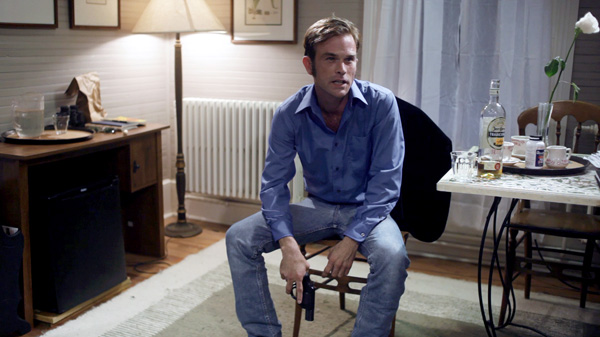|
Reviews of Recent Independent, Foreign, & Documentary Films in Theaters and DVD/Home Video

ROAD TO NOWHERE The opening images of Road to Nowhere are quite telling: a man puts a DVD disc into a laptop drive as a woman watches him do so. What are they about to watch? Why the film we’re about to see, naturally, but as it turns out, it’s a film within the film, also named “Road to Nowhere.” In a startling sequence following, in what seems like the “opening” of the film, a man enters a house at night, there’s a pause for 10 seconds, and then there’s a loud gunshot. The credits roll, and we see the names “Mitchell Haven” (the director) and “Laurel Graham” (the star). As the film goes on, it becomes a kind of meta-exercise that grew on me as it went along. It’s really as much about a filmmaker, Haven (Tigh Runyan), making a movie based on a real-life crime as it is about the problem of making the film, or just any movie. This is very personal for Monte Hellman, who hasn’t directed in over 20 years but who at one time was (and probably still is) a unique talent who straddled the line between more serious dramatic fare and B-movies. (Among those, Two-Lane Blacktop and Ride in the Whirlwind are his best.) Now he’s in the 21st century but dealing with the same old medium, with some new toys, such as shooting on a Canon 5D digital camera, editing on laptops, and using digital effects, like for an airplane crashing into a dam at night. The story itself, or the two stories he’s telling, aren’t be too special on their own. Haven, a fresh-faced director with something to prove, casts a woman (Shannyn Sossamon), who has only acted in one horror film, to be the star of his film, beating out the likes of Scarlett Johansson; a young femme fatale, Velma Duran, has a torrid affair with an older man, followed by a murder, a cover-up, more scandal, and a suicide even. What makes the film so unique, and a direct challenge to the audience, is that Hellman and his editor Céline Ameslon more often than not don’t distinguish between the two storylines. That is to say, what may be a flashback to Velma’s past could also be what’s set in the present tense… or is it just all Haven’s dream? And what about that one guy, Rafe Taschen (Cliff De Young), who seems so mysterious? The two storylines at times become indistinguishable, unless a scene gets interrupted by Haven’s film crew yelling “CUT!” and moving on to the next scene. The film becomes even more meta if one visits the Wikipedia page for Road to Nowhere. (Haven says he has no problem with rewriting the script if he can get money to shoot scenes in Europe—this was what actually happened to Hellman during shooting.) Yet the film doesn’t lack for entertainment appeal. On the contrary, the film is a biting black comedy—“We reduced the script to 95 pages and it’s STILL a four-hour movie!”—with insider cameos, like Variety’s Peter Bart interviewing Haven. Indeed, if Hellman had taken a more surreal approach, it could be a companion piece to David Lynch’s Inland Empire, also about a film production turned on its head by fantasy vs. reality, or the fusion of the two. Road to Nowhere also features a touching performance by Sossoman in both of her roles, and some of the cinematography stuns. It doesn’t shy away from the dark (a scene where Velma/Laurel is hyperventilating in a tunnel, completely in silhouette against a low-lit background, is one of the most haunting shots in years) or from long, poetic takes (the final shot, especially). Viewers who think they know what to expect may be turned off. The daring
structure and the ideal of mixing together cinema and dreams and
reality without discerning between them is what kept drawing me back
into the film, even as an occasional performance felt flat, like Runyan’s, or when some of the intended comedy just felt weird or too
strange to connect. So by the time Haven, in a tragic moment, turns the
camera on his film crew one last time, it feels like it could be like
Bergman’s Persona: cinema itself has
disintegrated in this character’s mind. It’s a flawed but awe-inspiring
gem from an artist finding his groove after so many years.
Jack Gattanella
|

